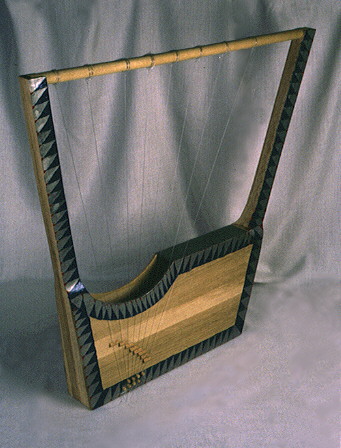
by Stacey Rolland, '00
The lyre was invented by the Sumerians of ancient Iraq around
3200 BCE. Its design was developed from the harp by replacing the
single bow shape with two upright arms joined by a crossbar, and
the strings, instead of joining the sound box directly, were made
to run over a bridge attached to the box.
The bull lyre is one of
three excavated from the royal cemetery of Ur. Each lyre had a
different animal head protruding from the front of the sound box
to denote its pitch: the bull lyre was bass, the heifer lyre was
tenor and the stag lyre was alto. All three were made of wood.
The bull lyre stood roughly 1.2 meters high. The sound box was
defined by a broad border of mosaic in shell, lapis lazuli and
red paste, and this border continued onto the rectangular upright
arms. The strings were tied to the crossbar and strung down over
the bridge to connect at the base of the sound box. Researchers
believe the notes constituted the same scale as Queen Shub-Ad's
harp and were achieved by the tension of the strings rather than
the length.